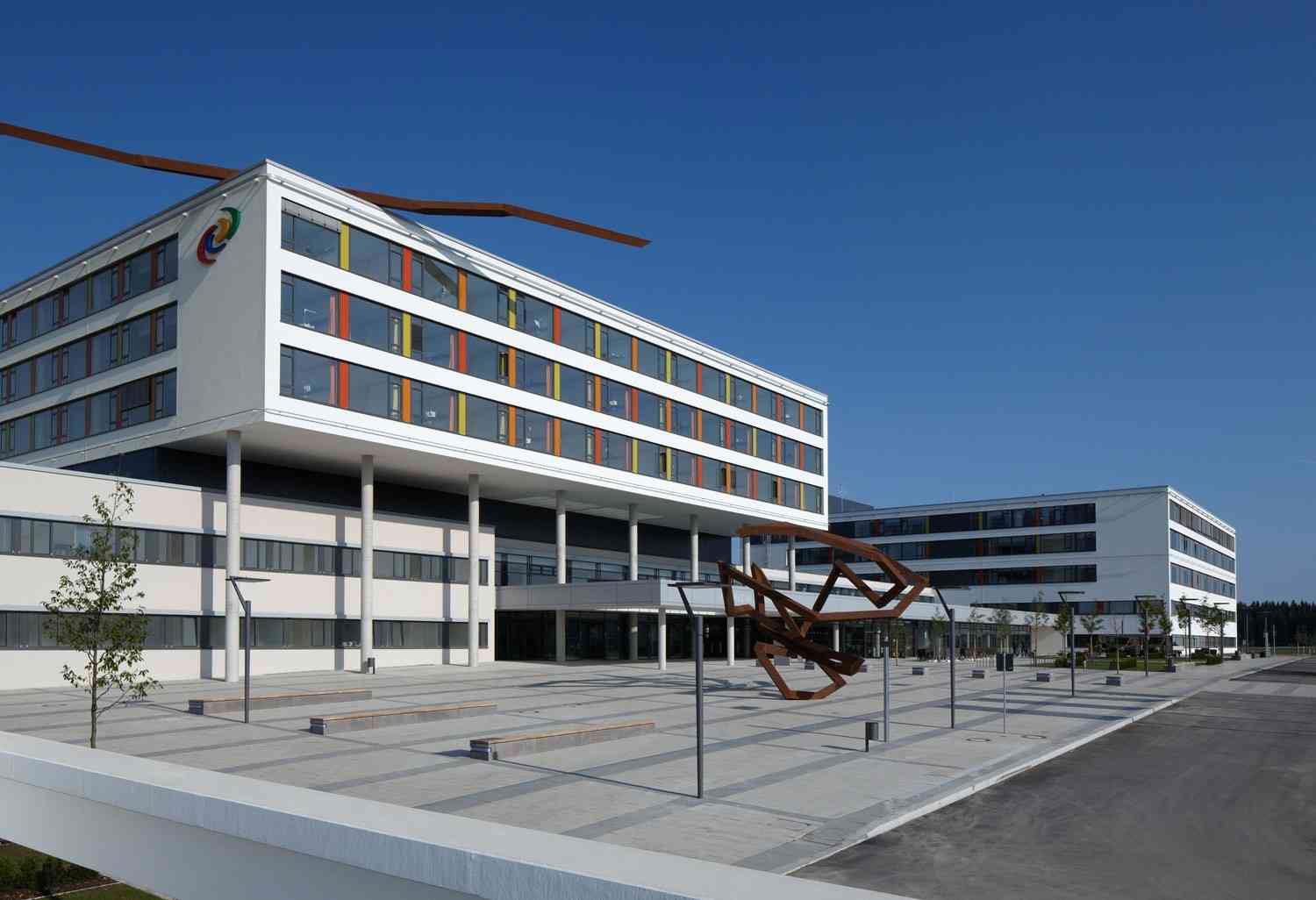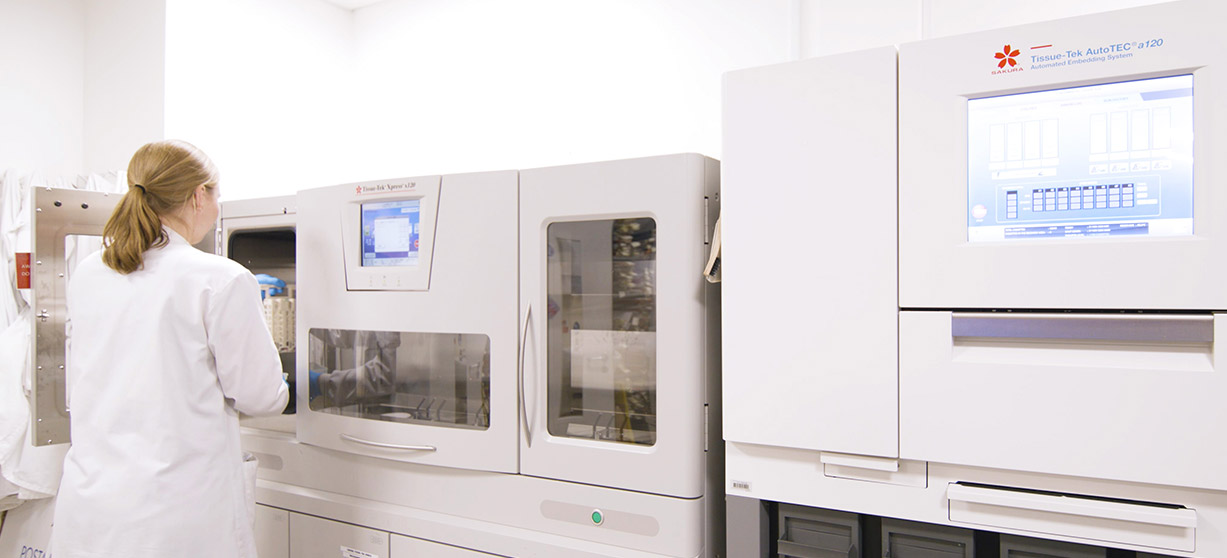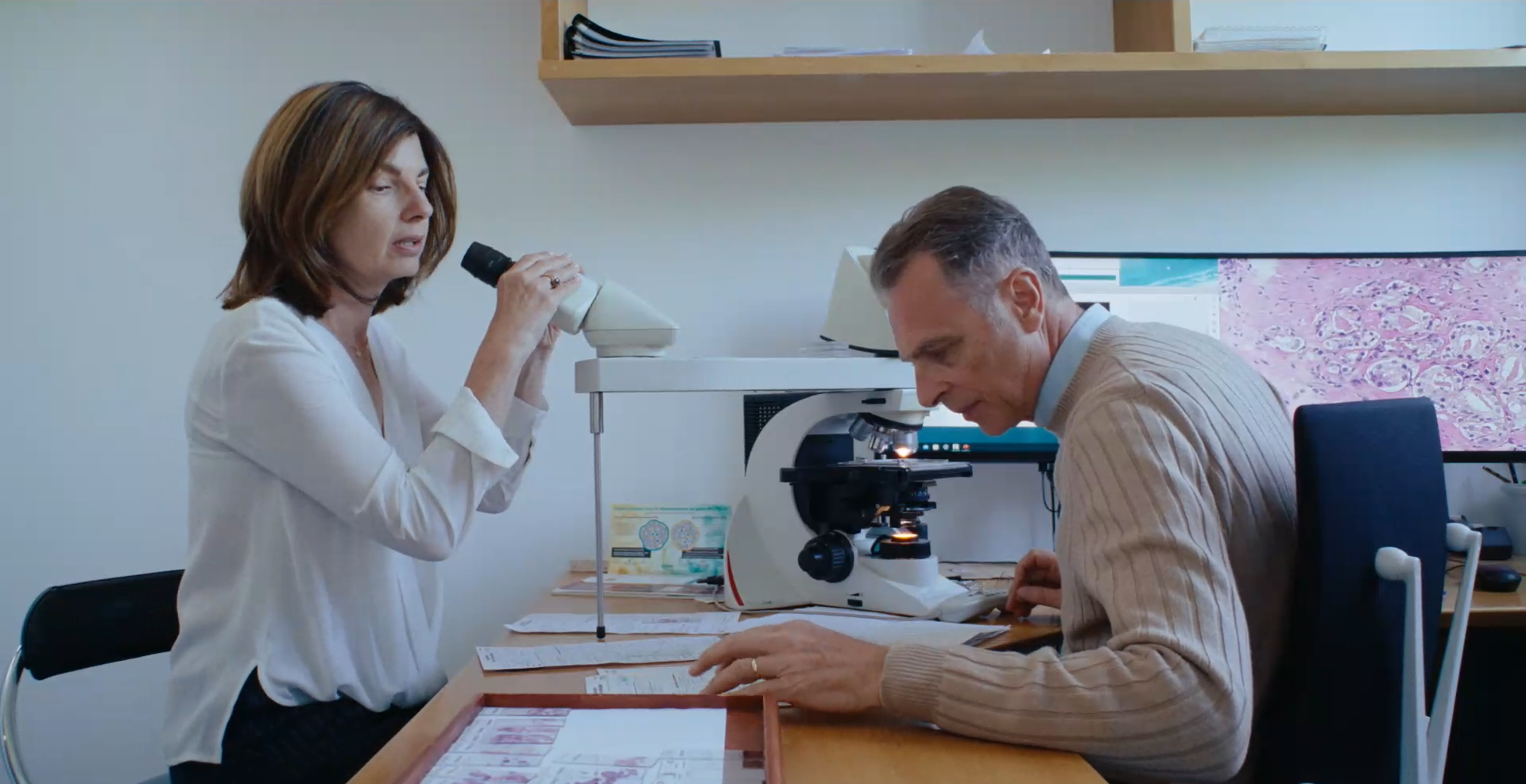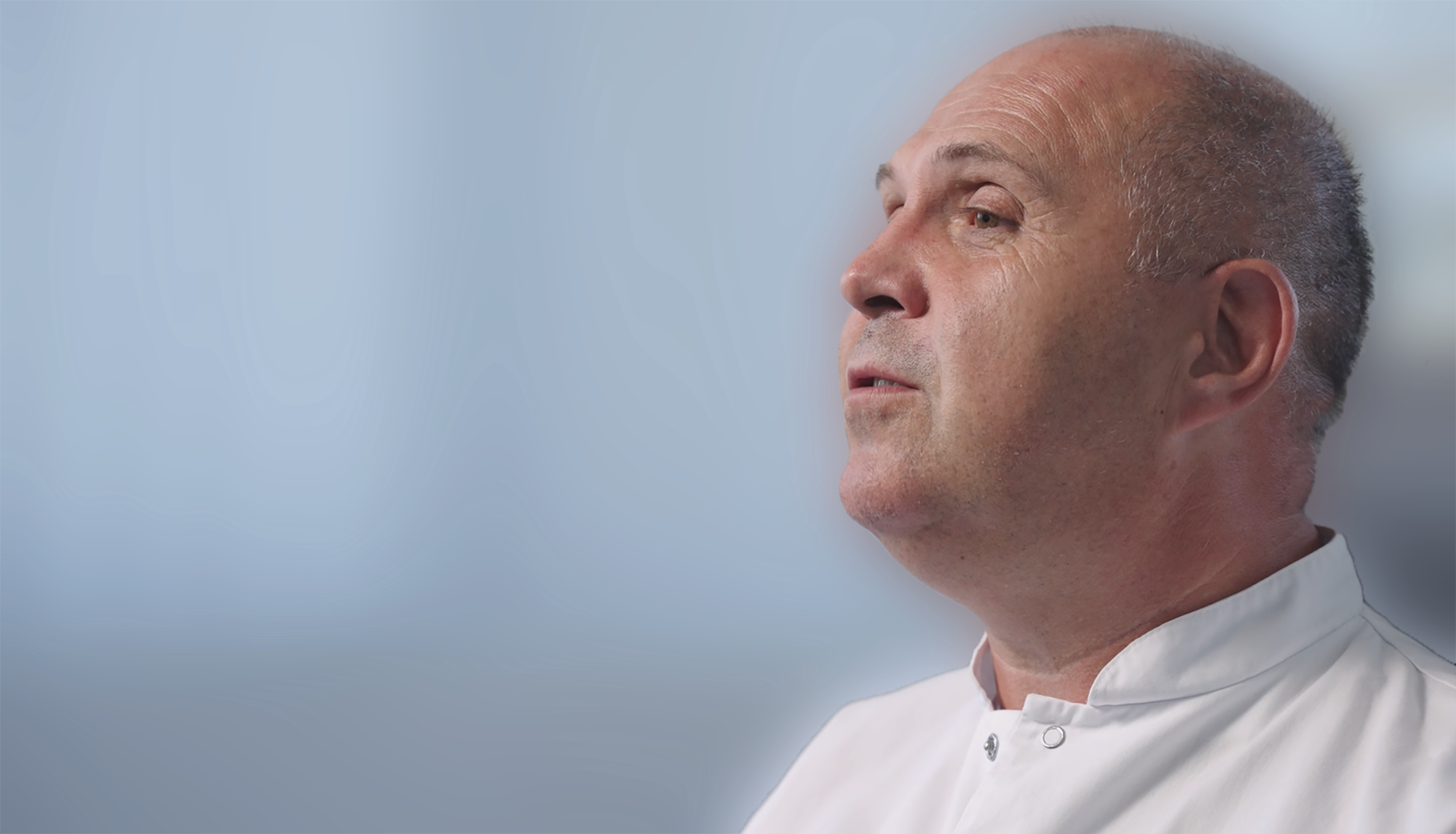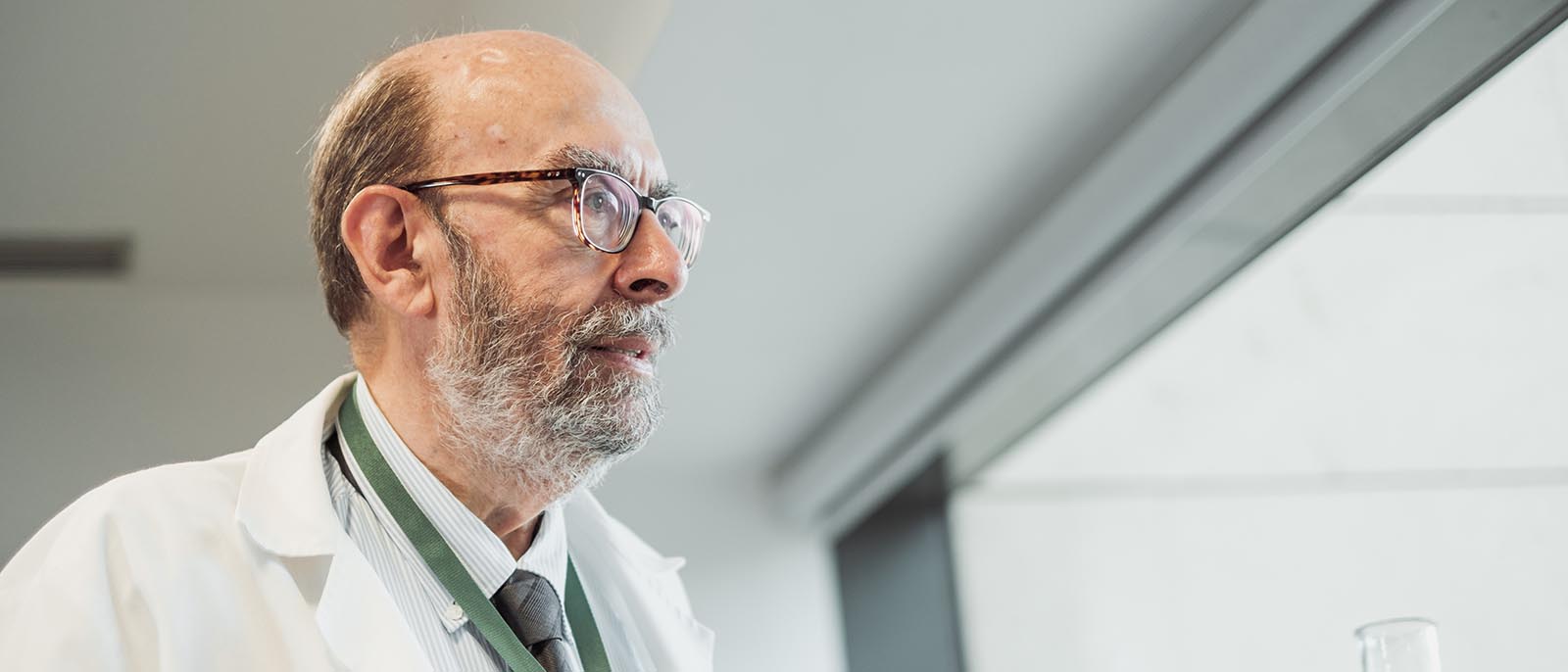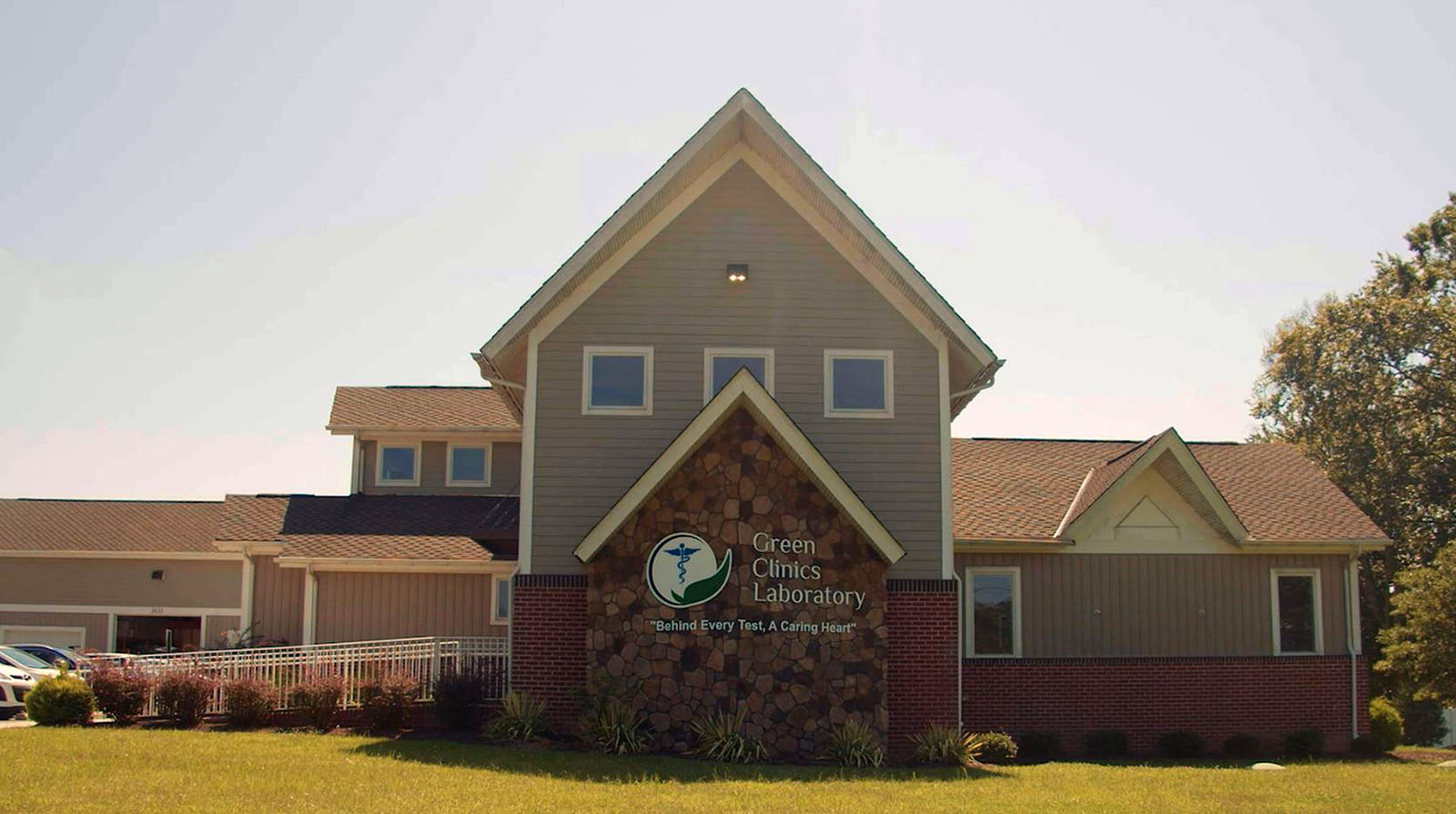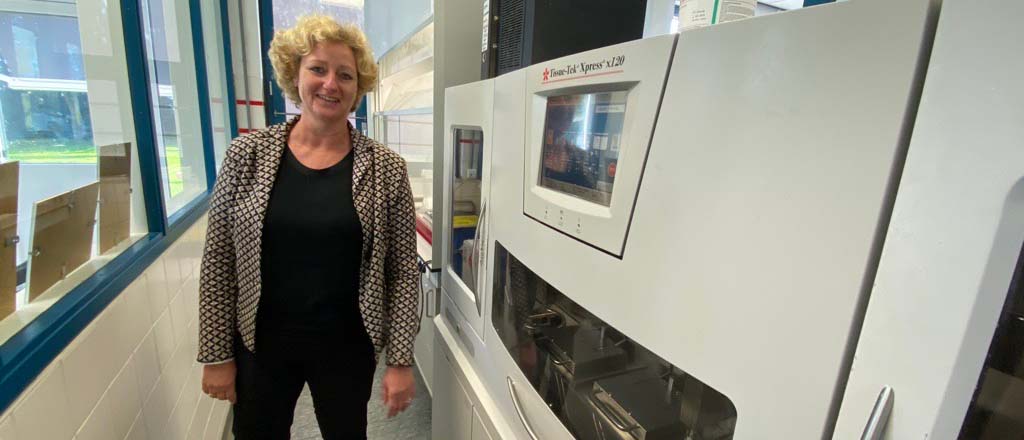Background:
The Institute of Pathology at the Schwarzwald‐ Baar‐Klinikum in Villingen Schwenningen has 18 employees, including three specialists and several assisting doctors with specialist training.
Approximately 17,000 tissue tests per year are processed at this institute. Of which, about 500 are shavings. More than 90% of the samples are processed at the pathology department, with the rest via the medical care centre and external referring physicians.
The lab works with one laboratory information system, prints both the cassettes and slides, conventionally dehydrates with the Sakura® Tissue‐Tek VIP6®, cuts the tissue sections and stains them mainly with the Sakura Tissue‐Tek Prisma® and Tissue‐Tek Film®.
For immunohistology and follow‐up reports (special stains, H&E repeats and further stages), the tissue sections are cut on the Tissue‐Tek AutoSection®.
What led you to purchase the Sakura Tissue‐Tek AutoSection?
Every day we are challenged to meet the consistent quality expectations for each tissue section. Especially when it comes to serial and re‐cutting of a tissue block, the first tissue section should be just as good as the last. To achieve this, we previously had to align the block with a spirit level. One microtome in the laboratory was the standard and all others were aligned. To ensure proper alignment, we had to work with test blocks. In general, that procedure was very time‐consuming.
Ever since I saw the Tissue‐Tek AutoSection at the Sakura stand during the Bamberger Morphology Day 2013, I wanted that instrument for our institute.
An important reason for our acquisition of the Tissue‐Tek AutoSection was that we were suffering recurring tissue loss. We were constantly receiving more biopsies from our customers. Almost all with very low amounts of tissue. To ensure that we had enough material, we always had to make a few practice cuts, and often the spare section slides were not used.
This led to extra working hours and unnecessary costs. With the Tissue‐Tek AutoSection we now only produce spare section slides in special cases such as for bone marrow cores. In other words, those that are actually dyed and reviewed.
How do you use the Tissue‐Tek AutoSection in your institute?
Usually we use the Tissue‐Tek AutoSection to cut all small biopsies such as pulmonary PE and various very small biopsies, as well as the so‐called re‐cuts and the required cuts for immunohistochemistry. These are typically secondary sections, made after the inspection of the H&E staining by the pathologist to determine if and which antibodies need to be stained by immunohistochemistry. With little material in the tissue block, this is often like walking a tightrope.
Even with special staining such as the PAS, Gomori, target Nielsen or Congo dyes, for us, the first tissue section needs to have the same average quality as the last section. It is therefore logical to cut the tissue block with the Tissue‐Tek AutoSection.
Meanwhile, we are also using the instrument more and more for routine re‐cuts. The automatic alignment of the block on the Tissue‐Tek AutoSection is crucial for use and helps us immensely. Even when we use older blocks from the archive, (re)cuts with minimal tissue loss can be achieved.
Our department works with the Tissue‐Tek AutoSection more and more every day. A growing number of MTAs cut with the Tissue‐Tek AutoSection and enjoy the benefits described above. It’s great to work with this microtome, and completely worthwhile to be open to new techniques.
What are the benefits for the material you cut, for you and for the pathologists?
For the material, it means lower tissue loss. Even with the smallest amounts of patient materials (such as lung biopsies) we still produce good tissue cuts with the Tissue‐Tek AutoSection.
It makes our work much easier and is also beneficial for the patient. They don’t have to undergo repeat tissue sampling and get a safe diagnosis. This helps us to meet the quality requirements, which is also important for our certification.
For the MTA, the Tissue‐Tek AutoSection makes working easier. We can ensure that the quality of the sections and patient material is sufficient.
The different protocols available on the Tissue‐Tek AutoSection are a relief for us and a virtual guarantee for consistent quality.
Using the Sakura solution, microtome and blade, we create fewer deviations during sectioning. If we produce controls for immunology ‘on slide’, we can control tissue blocks where the cut thickness is equal to the tissue sections.
Again, the program embedded in the Tissue‐Tek AutoSection gives us consistent quality and therefore safety. This enables us to regularly pass the external quality assurance scheme tests.
Since the Tissue‐Tek AutoSection aligns the block and trims automatically, I can now perform extra activities. For example, I can clean the paraffin block of excess paraffin. It saves a lot of time.
For the pathologist, satisfaction with the section quality is of the utmost importance. The goal of always achieving the same section quality is possible. Our pathologist saves time here because he can examine the tissue section without repetition and can make the diagnosis. If re‐sectioning is required for immunohistochemistry or special staining, our senior doctor brings up the H&E for sectioning on our new ‘wonder microtome’.
What has changed for you with the Tissue‐Tek AutoSection?
Meeting the requirements has become easier. Thanks to the Tissue‐Tek AutoSection, we can be confident that we have sufficient material. Sections from the archive are simply the next cut on from the last cut that was done on this case. We save time and minimise stress because we don’t have to move a block holder manually. We can count on the reliable quality of the Tissue‐Tek AutoSection, and our work is therefore more relaxed.
In which methods is your institute specialised?
The pathology in the Schwarzwald‐Baar Klinikum offers a wide range of services. Our pathologists work on all tissue submissions: breast, prostates and also large intestines are sent to us by our customers. Mainly, the tissue comes from our hospital. We serve a total of seven different organisations.
How many MTAs are in your lab?
We have nine MTAs in total, and we offer both an early and late service.
Do you need more time to make tissue sections with the Tissue‐Tek AutoSection?
No, absolutely not. We are now much more comfortable working in microtomy for immunohistochemistry and special stains. Due to the simplified and safe working on the Tissue‐Tek AutoSection, we no longer have to worry about the material and can offer high quality sections.
How do you see standardisation and quality versus speed when cutting?
We are ISO certified and will undergo a re‐audit within a year, for which we expect to be re‐certified. We have included the Tissue‐Tek AutoSection in this quality process.
Standardisation for cutting is a very important factor for us when it comes to consistent quality of tissue sections and subsequent diagnostics. As mentioned above, the last tissue section should mirror the first section. Automating the sectioning operations brings a higher level of concentration on quality from the user. This is a nice side effect in terms of cutting speed and quality.
Very important is the cleanliness of the Tissue‐Tek AutoSection, which, of course, goes for any other microtome. The alignment plate behind the cutting block must be absolutely clean, otherwise the exact alignment would no longer be guaranteed and the quality of the material being cut would suffer.
